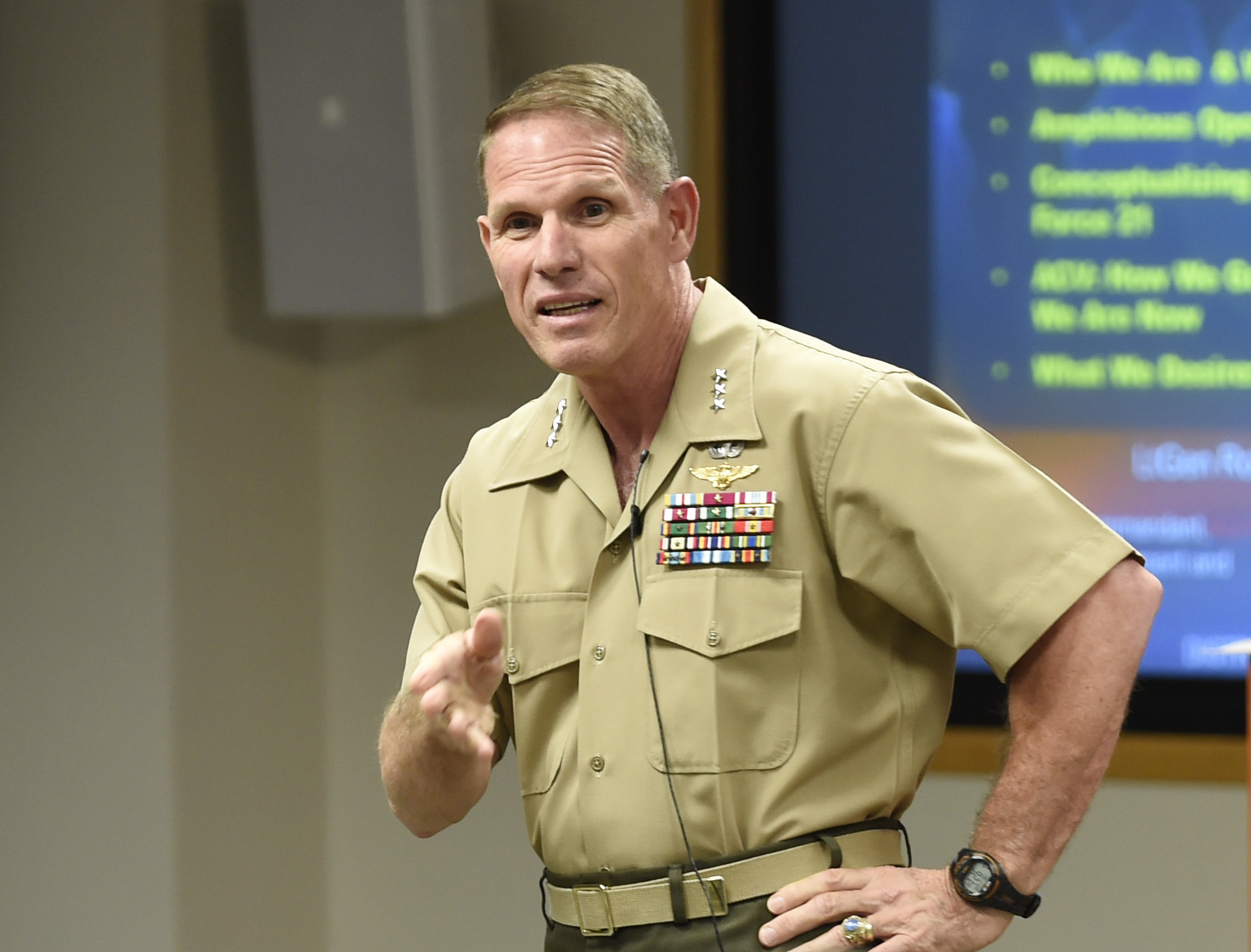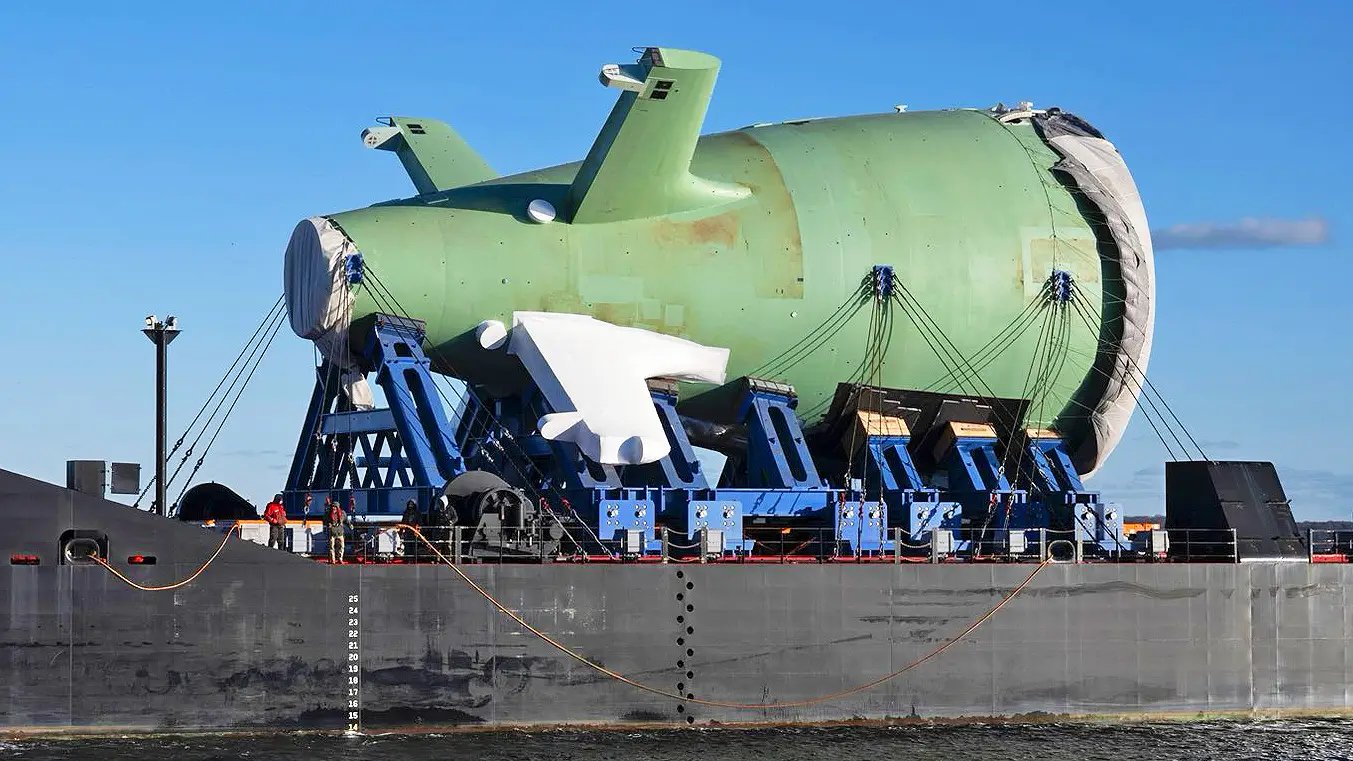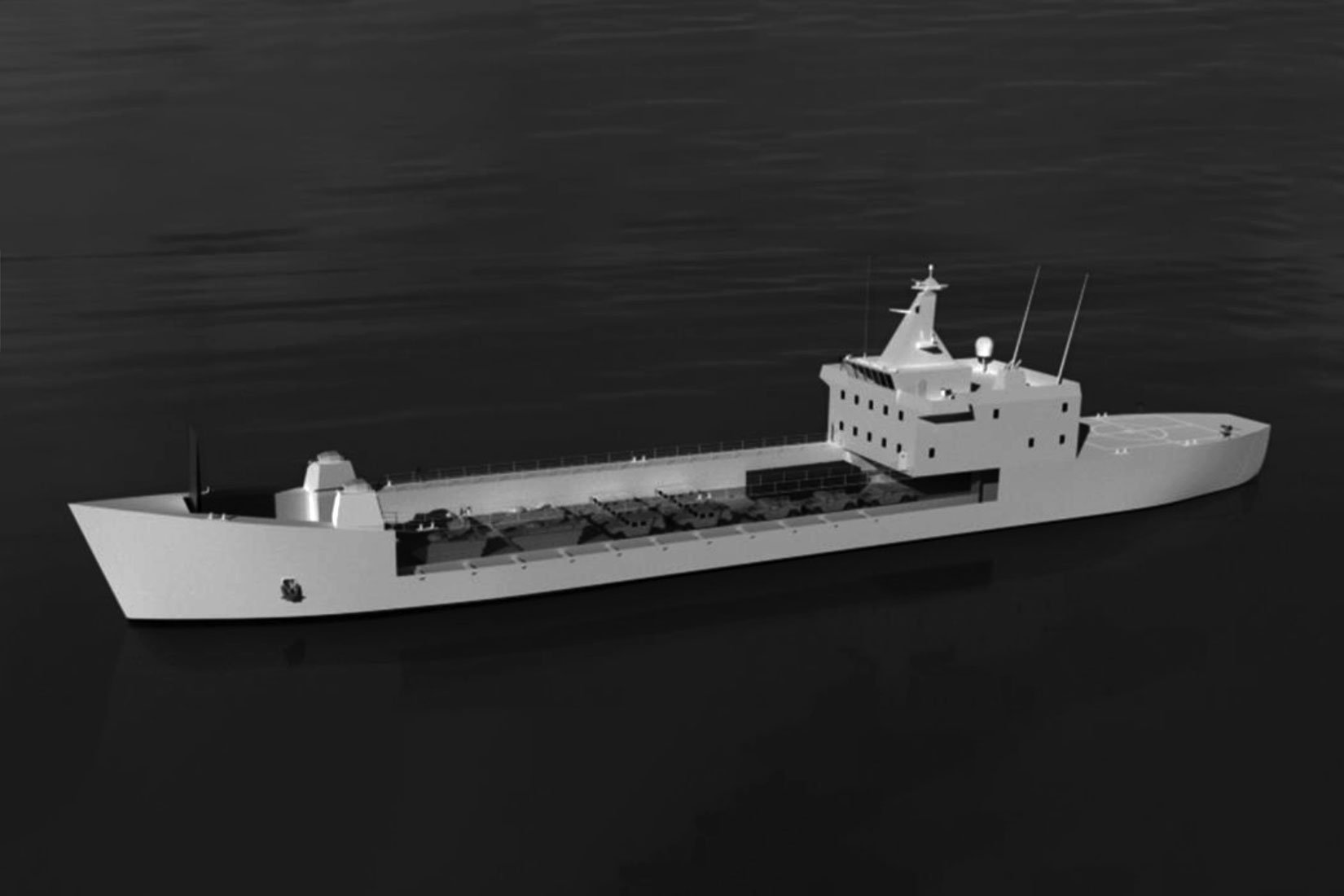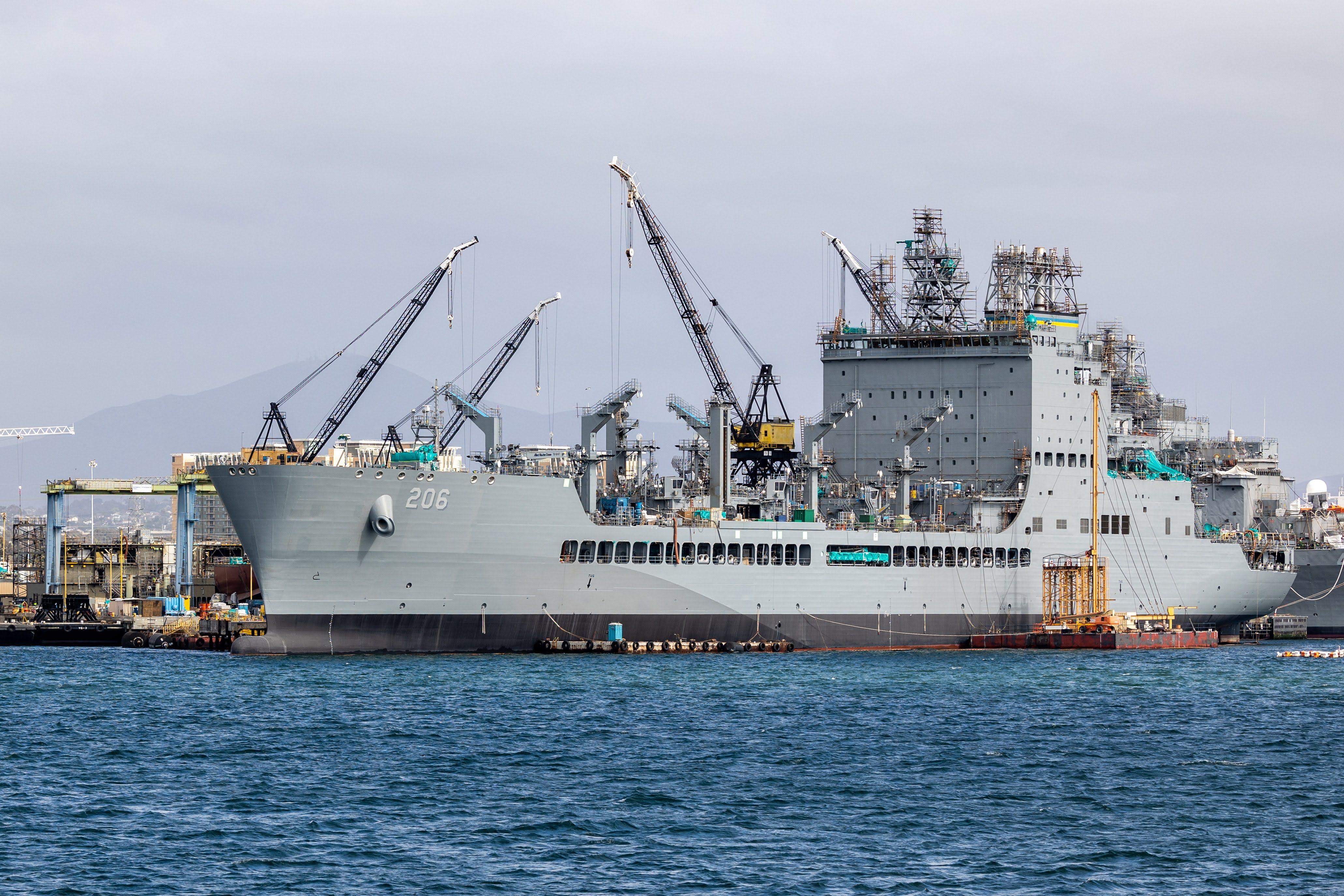
The deputy commandant for combat development and integration described the Marine Corps’ “campaign of learning” as the way forward in assessing what the service will need in the future.
Lt. Gen. Robert Walsh, speaking Wednesday at the Center for Strategic and International Studies said the campaign is seeking input from the Marine Corps, Navy, industry and academia over the next year or so as the service “will be looking hard at capability” for the future force and seeing what tradeoffs need to be made in capacity.
The event was co-hosted by the U.S. Naval Institute.
In answer to a question on spending in cyber and leveraging space capabilities, etc., for the future, he said, “We know we have to invest in that. Where does [the money] come from? An infantry battalion may look a little different” but have cyber assets.
The idea is not only to gather information, but “to spread that information out” for a junior officer with his Marines stepping off an Osprey to use in a contested area.
Walsh also said the Marine Corps is looking to “refresh” Expeditionary Force 21, its vision of concepts and programs. Key points would include digitizing the force, being able to operate in a denied environment and leader-to-led development.
Concepts are “how we see things operating from platoons . . . to large-scale operations.”
Using littoral operations as an example, Walsh said, “It’s not just about amphibious operations,” but “how do we as Marines fit into” larger naval operations under different levels of threat.
“I think we’re on a good path” with the amphibious combat vehicle (ACV). The decision to emphasize survivability and protection over high water speed did not mean the Marine Corps would not continue working that issue, he said.
Walsh said a decision to down-select two contractors for the vehicle likely will come in November with a final decision within a year or two.
“Money needs to go into ACV” because of its ship-to-shore capability over modernizing existing vehicles. “It’s who we are” as a future force.
“We are a light force,” he said. “We can’t operate with MRAPs [the large mine-resistant armor protected vehicles].” Walsh said the Marine Corps is working closely with the Army in developing the joint land tactical vehicle to replace their fleets of Humvees.
In replacing the Navy’s aging dock landing ships, he said, “We’re going to get a ship that looks a lot like the LPD-17,” the San Antonio-class amphibious transport dock.
Walsh said the Bell-Boeing MV-22 Osprey has “phenomenal capability” and it is “allowing us to be relevant where we never thought we’d be.” What was lacking when the Osprey was introduced was “a good concept” of what the aircraft could do. Young Marines are “figuring out the concept on the fly. We don’t want to do that with the F-35.”
He added in answer to a question: “We need to figure out what fifth-generation [fighter] means” when it comes to operating concepts for the Lockheed Martin F-35B Lighting II Joint Strike Fighter.
In looking at manned and unmanned systems, Walsh said, “You’re going to use both” but they need to remain interconnected. As for size of unmanned systems, he said, “If it can’t go on a ship, Marines are not interested.” He said that the service is interested in “persistent weapons” that could be launched from unmanned systems. Several times during his presentation, co-sponsored by CSIS and the United States Naval Institute, he referred to “platforms and payloads” to make the point of the need for integration.
This week’s agreement on a two-year budget deal was a good thing for the Pentagon because “it will take us away from the [continuing resolution]” that bars the start of new programs and holds spending to the previous level. Walsh said the drawback to the agreement was that it did not provide for the longer-range planning the department uses for programs and future operations.





